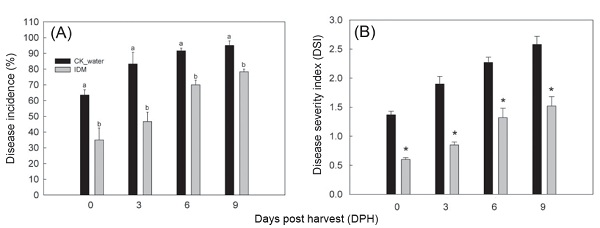Current issue

Author:Shuen-Huang Tsai*
Abstract:
To reduce postharvest diseases of guava during storage and transportation, preharvest disease management is crucial for guava fruit exportation. A survey of diseases affecting guava (cv. Pearl) fruits in the field during the summer and autumn seasons revealed that black spot disease (caused by Phyllosticta spp.) is the primary cause of fruit rots, followed by anthracnose, scab, Phytophthora blight, and other fruit rots. Regarding fungal communities on asymptomatic leaves, fallen leaves, and branches in the field, Phomopsis spp. had the highest isolation rate, could be up to 100%. Additionally, common fruit pathogens such as Phyllosticta spp. were also isolated. Notably, 84.6% of the Phyllosticta isolates were pathogenic, indicating the potential for latent infections. Trials involving guava fungicides approved by the Animal and Plant Health Inspection Agency and commercially available microbial fungicides were evaluated to develop an integrated disease management strategy tailored specifically for summer and autumn fruit diseases in orchards supplying export markets. The strategy begins with orchard sanitation, including removal of fallen leaves and pruned branches, combined with the application of environmentally friendly materials such as lime sulfur or Bordeaux mixture sprayed on the soil surface. For chemical management in the field, it is recommended to use fungicides approved by both Taiwan and Canada or the United States, such as 25% azoxystrobin. This should be mixed with microbial agents like Bacillus amyloliquefaciens (CL3) or B. velezensis (BF). These treatments should be applied at 7- to 10-day intervals and repeated at least three times. Subsequently, rotation of fungicides with different modes of action combined with microbial products can help reduce the risk of fungicide resistance and minimize the likelihood of exceeding residue limits.
Key words:Exported guava, Guava black spot, Azoxystrobin, Bacillus spp., Integrated disease management
Download:![]() PDF Links
PDF Links
 Submit your manuscript
Submit your manuscript
 Guide for authors
Guide for authors